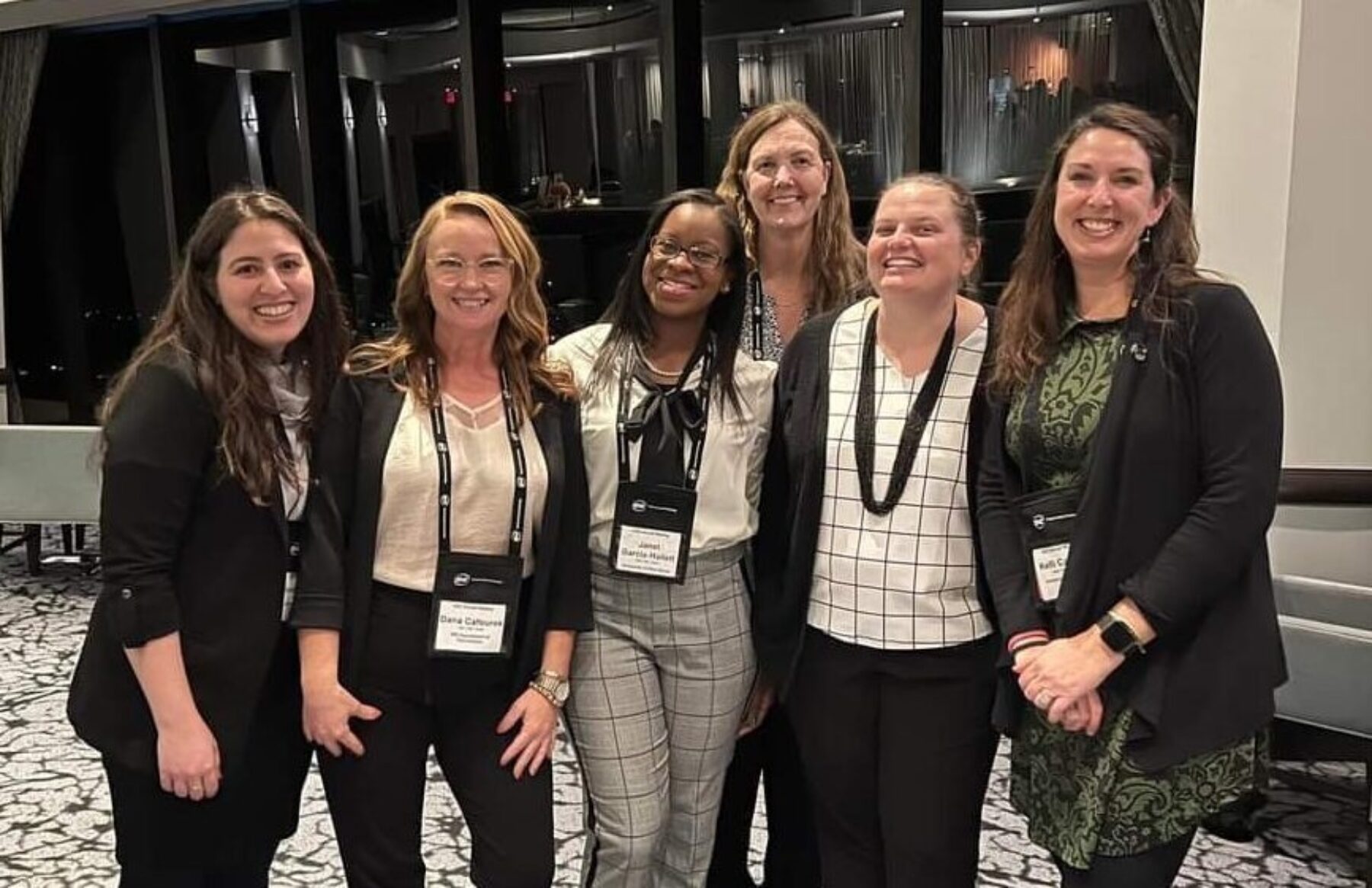The US prison system is in crisis, suffering from a combination of understaffing, overcrowding, and crumbling infrastructure. This has left state corrections departments scrambling for solutions that will make facilities safer for both incarcerated people and staff. Some departments have adopted a more rehabilitative approach inspired by prisons in Western Europe. But while pilots of such models have shown promising results, little is known about how well they work in other contexts or which features are most effective.
Arnold Ventures (AV) is partnering with Kelli Canada and Beth Huebner, researchers at the University of Missouri and Arizona State University, respectively, to test a novel intervention aimed at improving living and working conditions inside prison walls. Specifically, Canada and Huebner are working with the Missouri Department of Corrections to conduct a randomized controlled trial of the Missouri Prison Transformation Project (MPTP). MPTP aims to enhance staff training, improve the physical environment, develop skill-building opportunities for incarcerated people, and build connections between incarcerated people and staff. The study will seek to understand how this program impacts misconduct during incarceration and recidivism following release.
“The Missouri Prison Transformation Project aims to improve lives and foster evidence-based solutions that address deeply ingrained challenges within our criminal justice system,” says Golnar Teimouri, criminal justice research manager at AV. “By developing and testing an innovative approach that prioritizes humane treatment and conditions, we hope to contribute a new model of incarceration that improves the safety and wellbeing of staff, incarcerated people, and communities.”
We sat down with Canada and Huebner to discuss the current corrections crisis and the importance of testing outcomes with rigorous research designs.
This conversation has been edited for clarity.

Arnold Ventures
Tell us more about the policy intervention you are evaluating.

Kelli Canada
The intervention is called the Missouri Prison Transformation Project. It has four pillars that include staff training, changing the physical environment, increasing opportunity for people living in prison to build individualized skills that will help them be successful when they get out, and building community cohesion both on the housing unit within the prison and with their family and community outside of the prison when they leave.

Arnold Ventures
Why is it important to create and study interventions that address the conditions inside prisons?

Beth Huebner
There are a couple of related issues. The first is that prisons are very difficult environments to live in. For incarcerated people, prison conditions affect their health, their behavior, their risk of recidivism, and their community engagement when they are released. Prison conditions also affect prison staff and their families. They can lead to missed work, trouble recruiting and keeping staff, and staff misconduct. And staff members have a higher risk for substance use, suicide, and poor mental health than other occupations. So, anything we can do to make sure that incarcerated people and staff are safe inside is really key. The second issue is that there has been a major movement to improve the conditions of confinement. There are some international models, which is amazing to think about implementing here in the United States, but it’s not clear what parts of those models are effective. One of our goals in this project is to quantify what aspects positively affect outcomes for incarcerated people and staff, so that other communities can replicate them successfully.

Arnold Ventures
How did each of you become interested in this issue?

Beth Huebner
I have been interested in corrections since high school. I was active in Amnesty International, and solutions to prison overcrowding were a topic when I was on the debate team. The corrections system has so much power over people. It affects all aspects of people’s lives, families, and communities. And prisons, specifically, have been hidden from view. Very few people visit a prison and know what actually happens there. Kelli and I have worked together collaboratively for the last five years, and both of us have also worked independently with the Missouri Department of Corrections for a couple of decades. We have learned about the wonderful people who are inside — incarcerated people and staff — and how much change is needed. And we want to improve the institution, so people can be safe inside and when they come out.

Kelli Canada
Prior to my work as a researcher, I was a licensed clinical social worker in Chicago where I worked with people with serious mental illnesses. Around half of my caseload had some kind of involvement in the criminal legal system. That overlap has been my pathway into this work. In terms of prisons, Beth and I worked on the Urban Institute Prison Research and Innovation Initiative that AV supported, and I was really surprised and uplifted to see what change was possible in prisons. As a clinician, this project is giving me an opportunity to think about the work we can do to improve living and working conditions inside so that people’s mental and overall health isn’t negatively impacted for decades.

Arnold Ventures
What have you accomplished so far in your study?

Kelli Canada
We are very early into the project. So far, we have identified the four prisons where we will intervene, and the dedicated point people for each site. We started site visits and wing renovations. For phase one, we’re focusing on one male institution and one female institution. We’re changing the physical environment, onboarding staff, and trying to get the training in place, with a goal of beginning to move people into the new units by April 2025. Incarcerated people will be able to opt into the research, and then they will be randomly assigned to the intervention units or normal prison units. That will give us an opportunity to compare outcomes of intervention unit participants with those of people in traditional conditions of confinement.

Beth Huebner
We are also bringing in a professor of design to go into the prisons and help incarcerated people and staff design their spaces. They’re going to work with the design team to make a plan that is feasible and will make them feel safe. This collaborative nature of each aspect of the project makes this research unique. The Department of Corrections has been very supportive, and our original project was signed off on by Republican Governor Mike Parson. Work like this cannot be done without institutional support. It requires a lot of people behind us.

Arnold Ventures
How has this project been influenced by existing prison models?

Kelli Canada
We’re drawing on international best practices. We also visited Little Scandinavia, in Pennsylvania, with frontline staff and administrators from one of our prisons, and some staff from central administration of the Missouri Department of Corrections, and we just observed what was happening on the unit. We tried to learn more about the physical changes, practices, and policies they implemented, and we were left thinking about which of the international best practices we want to adopt in Missouri. One concept is “normalcy” — trying to create more ordinary conditions within the prison. That includes providing opportunities for incarcerated people to have privacy, autonomy, and the ability to make decisions about things like their meals and daily activities. We’re also using a more humanistic approach to interactions between staff and residents.

Arnold Ventures
How do you hope your research will contribute to policymaking?

Kelli Canada
A common goal for policymakers and community members is to reduce recidivism and keep communities safe. People are open to evidence about policies that can create those outcomes while also spending less public money. In our study, we’re focusing specifically on the elements of the model that are part of international best practices and whether they create those outcomes. We have also tried to be really practical in planning with the Department of Corrections. For example, one of their concerns was that, while it’s great to place people in individual cells, they just don’t have the space without building a bunch of new prisons. That’s one element that might need to be more flexible — and that’s probably also the case for other prisons across the country.

Beth Huebner
There have been traditional models of incarceration for many years. Most prisons in Missouri are in rural areas, and many people know someone who works in prison or has been arrested or incarcerated, so these issues affect a lot of people. If we find that more humanistic models can be successful — can lower costs and create safer, more resilient communities in the long term — that could change the paradigm for modern prison facilities.

Arnold Ventures
Why is it important to produce rigorous, evidence-based research?

Kelli Canada
Sometimes ideas sound great and give people warm, fuzzy feelings. But without actually evaluating them, we don’t know the long-term effects. In the mental health and corrections systems, we haven’t always done rigorous research. Sometimes, interventions are implemented because they seem like the right thing to do, but they can actually cause more harm, cost more money, and be less efficient and effective in the long run.

Beth Huebner
These programs are run with public dollars, and there’s limited money, especially at the state level. We want to make sure that we’re using the most effective policies that we can. We often think of RCTs as being mainly for medical tests and things like that. But when we’re talking about human behavior, it’s less common to see RCTs. That’s what makes this project relatively unique.




















